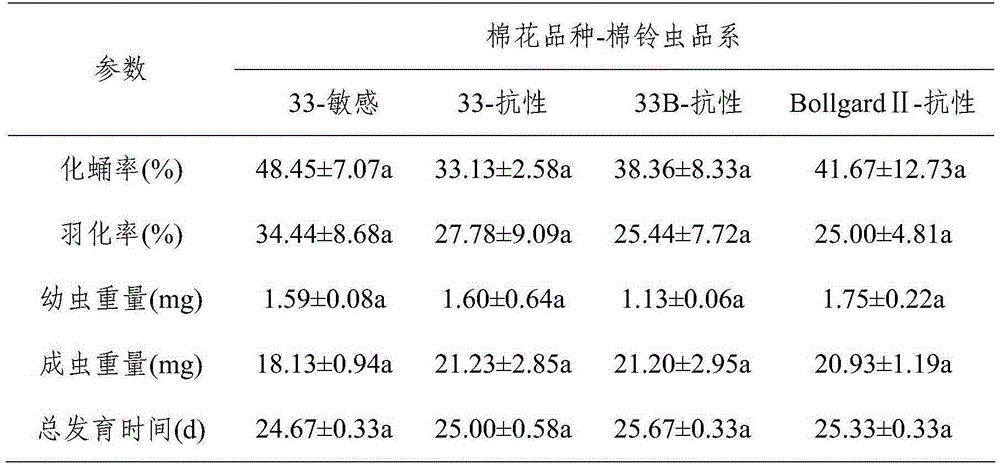A Bioassay Method for Evaluating the Effect of Transgenic Cotton on Lacewings
A bioassay and large lacewing technology, applied in the direction of biological testing, material inspection products, etc., can solve the problem of narrow action range of insect-resistant transgenic crops, and achieve the effect of wide application and strong practicability
- Summary
- Abstract
- Description
- Claims
- Application Information
AI Technical Summary
Problems solved by technology
Method used
Image
Examples
Embodiment 1
[0038] The 2% agar solution obtained by mixing the agar powder and distilled water was heated and boiled, and the hot agar solution was poured into a disposable plastic petri dish and cooled to room temperature; Insert the newly hatched Cry1Ac-resistant or sensitive cotton bollworm larvae, and tighten the culture dish with a rubber ring to prevent the newly hatched larvae from escaping.
[0039] Cotton varieties: transgenic cotton 33B (expressing Cry1Ac protein), transgenic cotton variety Bollgard II (expressing Cry1Ac+Cry2Ab), non-transgenic cotton parent 33. Cotton bollworm strains: Cry1Ac-resistant strains (resistance strains of cotton bollworms screened indoors with Cry1Ac protein), sensitive cotton bollworms.
[0040] Feed the newly hatched larvae with pea aphids for 2 days, then feed the larvae with cotton bollworm larvae that have eaten transgenic cotton (33B, Bollgard II) for 2 days, and replace with new larvae every day until the larvae eat cotton bolls After 5 days ...
PUM
 Login to View More
Login to View More Abstract
Description
Claims
Application Information
 Login to View More
Login to View More - R&D
- Intellectual Property
- Life Sciences
- Materials
- Tech Scout
- Unparalleled Data Quality
- Higher Quality Content
- 60% Fewer Hallucinations
Browse by: Latest US Patents, China's latest patents, Technical Efficacy Thesaurus, Application Domain, Technology Topic, Popular Technical Reports.
© 2025 PatSnap. All rights reserved.Legal|Privacy policy|Modern Slavery Act Transparency Statement|Sitemap|About US| Contact US: help@patsnap.com

